11 Gate Latch Types to Perfect Your Fence & Security
Author: Omar Alonso | Editor: Omar Alonso
Review & Research: Jen Worst & Chris Miller

No matter how open the plan of your house or how much you like to entertain guests, it does not literally have to mean that your door is always open, especially with the right gate latch types.
Whether it is the gate of your yard or the main gate that opens onto your property, a latch is very important so you can keep various kinds of unwanted guests out and ensure the security of your home and family.
But what kind of latch should you get and how do they work? The following are some of the common types of gate latches available in the market and the mechanism they follow.
11 Gate Latch Types
The types of gate latches are followed by a brief description of the kinds of materials you can use for your gate latches.
Things to consider about gate latches are whether they match your architecture, and if you desire the ability to lock them, and what material you'd like them to be made out of in terms of durability, look, and strength.
My gate actually closes further than it should, which led to my gate latch breaking, so I'm currently in the process of buying and installing another, but not until I create some shims to stop the gate from swinging past its stopping point. That's another thing to consider!
Gravity Gate Latches
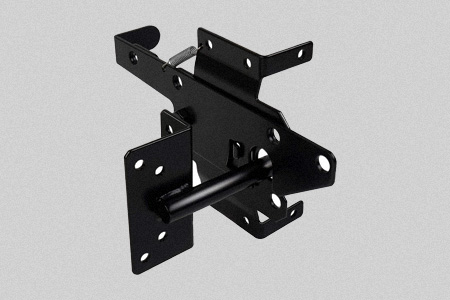
A gravity latch is not any single type of latch but is a mechanism that is employed in various kinds of gate latches. As the name suggests, this type of latch uses gravity to secure the latch arm in place and close the catch. It relies on the force of the swing when you close the gate.
When the latch arm hits the strike plate, it rises from the impact and then automatically falls into the catch. This type of latch must be installed on both sides of the gate and in some cases, you can even lock and unlock the gate from either side.
It is a simple design to install though it may not be the most secure design as it can be operated from both sides of the gate.
Some gravity latches are also lockable but in most cases, you will need an extra padlock to secure it into place. Many of the gate latch types discussed below will follow the gravity operation method.
Spring-Loaded Gate Latches
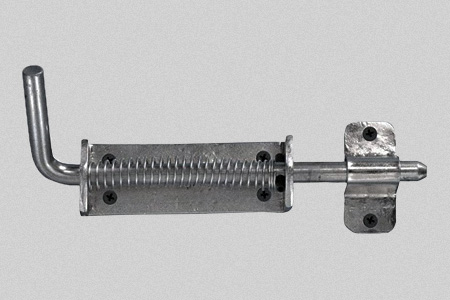
If in a gravity latch the closing action relies on gravity, in spring-loaded latches, there is a spring that allows the closing action to be completed.
These latches are smoother to operate and are the more secure alternative, albeit more expensive than gravity latches. When there is pressure exerted on spring, the latch arm falls into place and into the catch.
Spring-loaded latches are also double sided and in most cases can be operated from both sides. Though not all spring-loaded latches are lockable, there are lockable options available.
Like the gravity latches, this is not a single type of latch but is a mechanism that is applied to various types of gate latches, many of which will be mentioned below.
These gate latches are usually installed on in-swinging gates, however, the installation can be reversed for out-swinging gates as well. Just make sure you use the right types of drill bits to bore out the holes so you don't crack the wood of the fence.
No matter what types of wood fences you're building, cracking any board is going to slow you down and be a huge headache to replace and re-stain. Take your time and drill slowly.
Thumb Gate Gate Latches
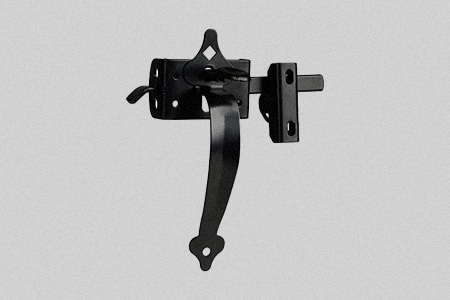
A thumb latch works as a two-way latch. Towards the outside (the street side where the gate opens) there will be a plate (which usually has some kind of decoration or design). This plate comes welded or attached with a thumb depressor.
When you press this thumb depressor, a latch on the other end of the gate and on the corresponding side of the plate will lift and the gate is then opened.
Once you are inside the gate, the latch arm should rise on its own upon impact when you close the gate behind you. It then falls and settles on the catch on its own. Given that the latch arm follows a mechanism of falling into place on its own, it will be categorized as a gravity latch.
All thumb gate latch types are double-sided though not all are lockable. But most importantly, they can only be used on in-swinging gates.
Bolt Gate Latches
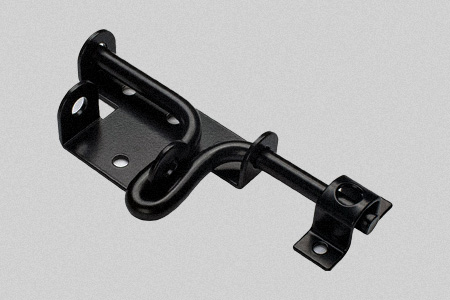
When you hear the word latch, the picture that forms in your mind is usually of a bolt latch. These are one of the most common types of latches and are likely to be found in most old school building constructions and gates.
Bolt latches are not double sided and can only be installed on the inside. This also makes them easier latches to install as you only need to deal with one side.
This is an old-fashioned design where you simply have to slide the latch into the socket to secure it in place. Once you have bolted the latch, note that you won’t be able to open it from the other side unless you can reach the lock from the other side.
The bolt latch may or may not be lockable. Usually though, you may require an extra padlock to secure it into place and keep it there. And in that case you may consider the types of keys for your padlock.
Ring Gate Latches
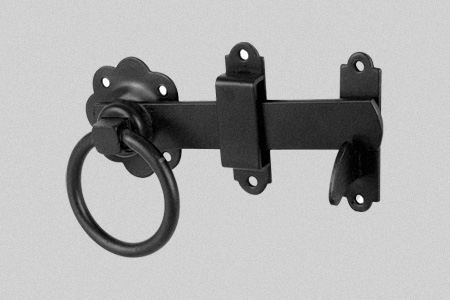
Ring latches are also great double-sided options to consider. There is a backplate on both sides of the gate. Both the backplates will have a ring to help maneuver the latch.
The ring on the inside, however, will be attached to a latch arm. When the ring is turned from either side of the gate, it will lift the arm out of the socket and unlock the gate.
This type of latch can be used in in-swinging as well as out-swinging gates. However, what one must ensure is that the latch arm is installed on the side of the gate that swings open.
Lever Gate Latches
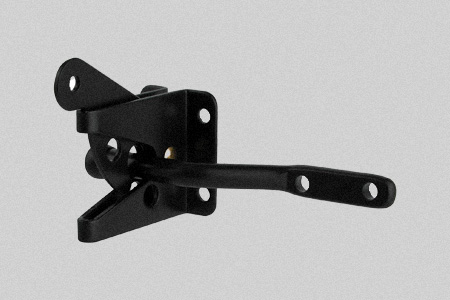
Lever latches function in the same way as ring latches. The main difference, however, is that instead of a ring latch there is a lever handle that is turned.
Lever gate latch types are also extremely common and you have probably seen them around your home or office buildings without knowing what they were called.
They may be lockable though that is not always the case. Like ring latches, they can be installed on in-swinging as well as out-swinging gates. But what is crucial is that the latch arm must be installed on the side of the gate the swings open.
Fingertip Release Gate Latches
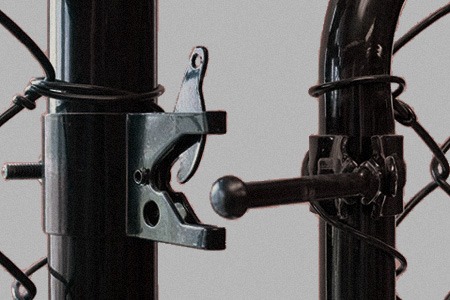
A fingertip release latch is one of the simplest and easiest latches to install, though they are not the most secure. At best they would be useful for keeping critters out of your garden or yard and not for any actual security.
They can be used on in-swinging as well as out-swinging gates and have a self-latching mechanism. It uses the spring-loaded mechanism which allows the latch arm to fall into place automatically.
Types of Gate Latches by Material
The options that have been described above are some of the most common types of gate latches as well as the most effective mechanisms that facilitate the closing action.
But the type of material used could also make a difference in how the gate latch functions. The following are some of the common materials used for various gate latches:
Iron Gate Latches
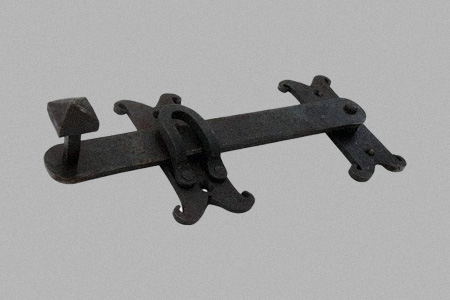
Cast and wrought iron are some of the most common and useful materials used for gate latches. Iron is durable and with powder coating, you can also safeguard the material from moisture.
However, if you live in a coastal area or a place where humidity is high at all times, iron may not be the best idea no matter how many protective coatings you give it.
Brass Gate Latches
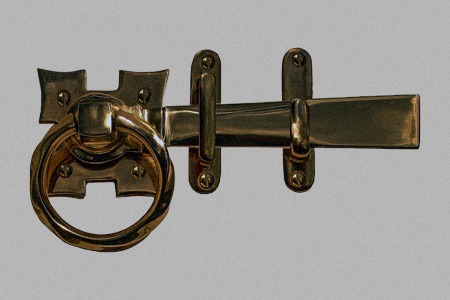
If you are looking for something grand and fashionable, brass gate latches are a great option. They are heavy so you don’t have to worry about the wind undoing the latch.
They also pair very well with colonial structures and vintage styles, if that is the look you are hoping to achieve. They do, however, become tarnished over time and won’t retain their sheen.
Make sure you use the right types of screws, preferably brass so you don't destroy the actual gate latch by using a metal that's much harder than it.
Stainless Steel Gate Latches
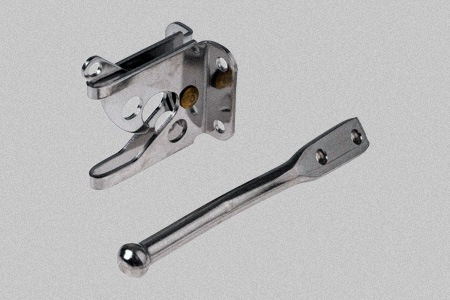
If you are looking for a sleek, modern look, then stainless steel is a great option to look at for gate latch types. Stainless steel has clean cuts and will always present you with a sheen unless you live in an area with a lot of salt in the air. It does not go with all styles of houses, however.
Bronze Gate Latches
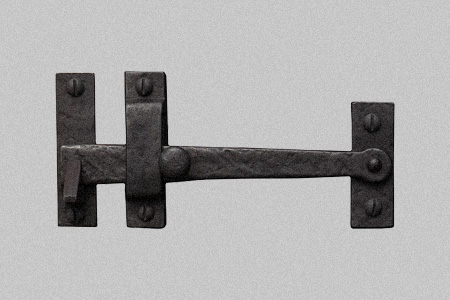
If you are willing to expand your budget, then bronze is a great material to consider. This is especially useful if you live in a coastal region as it will not rust.
Neither is there any fear of bronze latches chipping as it does not have any coating. They are durable and stylish options, albeit the most expensive of the lot.
Types of Gate Latches for Every Fencing Need
Depending on the level of security you are looking for, you can pick a gate latch type that best serves your needs.
All the types of latches that have been mentioned above are not too complex to install, though some of them can take longer to install as they are fixed on both sides of the door.
You may also want to reinforce security by adding a padlock to certain types of latches since not all of them are lockable. But the most important thing to pay attention to, after considering the mechanism of the latch type, is the material used to build the latch.
If you live in Miami and choose an iron latch, you will have to treat it frequently to prevent rusting. So pick the material of your gate latch types according to environmental conditions as well.



